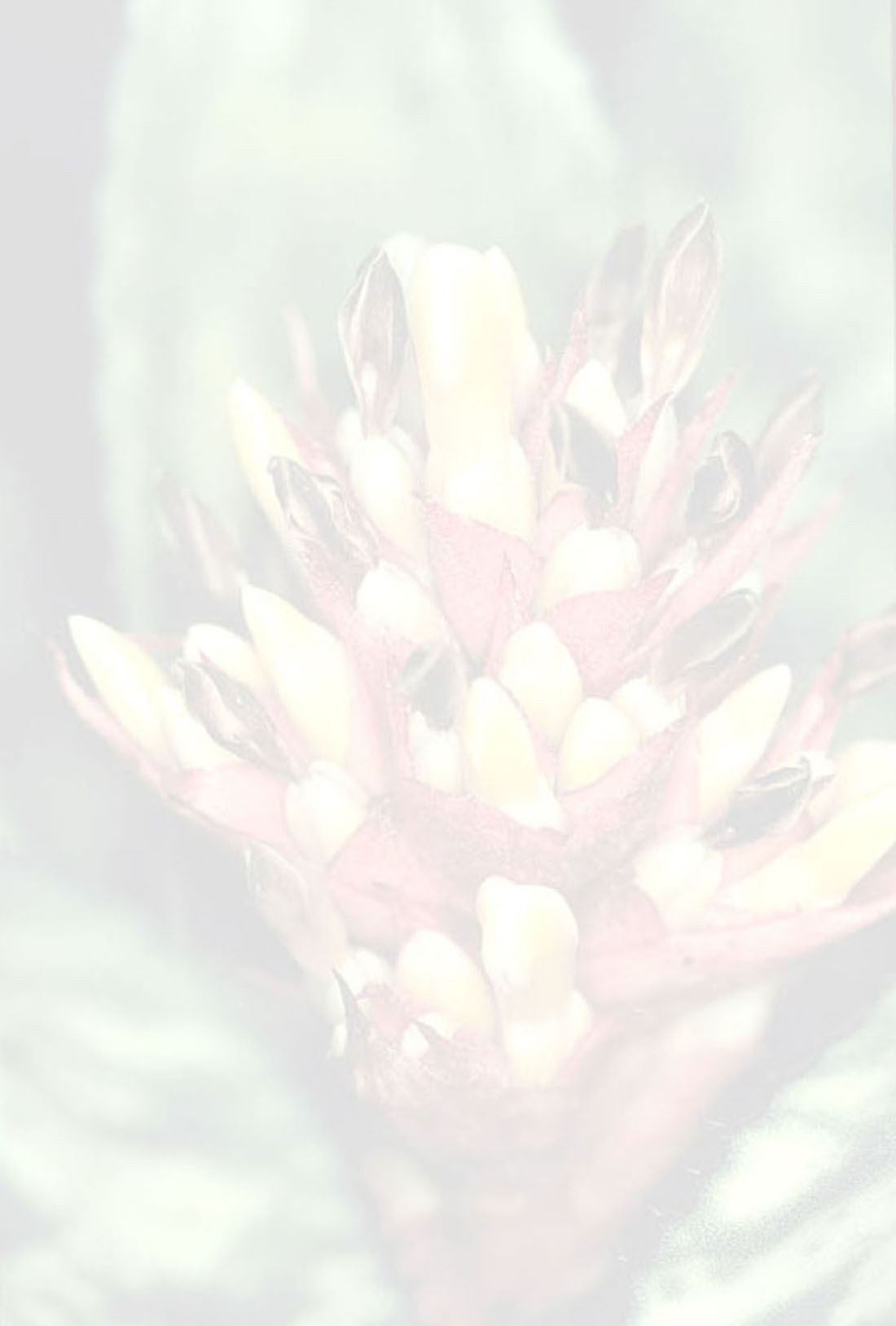


plant terrestrial leaves strongly coriaceous, exceeding the inflorescence, forming a broad crateriform rosette. leaves: sheath narrowly oblong-elliptic, ca 28 x 10 cm, dark castaneous and densely brown-lepidote on both sides; blade sublinear, acuminate and ending in a dark castaneous, stout, rigid spine ca 1 cm long, slightly if at all narrowed toward base, 85 x 8–9 cm, glabrescent adaxially, inconspicuously white lepidote abaxially, margins densely spinose, spines subtriangular-uncinate, mostly antrorse, brown, 1–2 mm long, 3–8 mm apart. inflorescence: peduncle erect to suberect, ca 45 cm long, ca 2.3 cm in diameter, coarsely white-lepidote, becoming glabrescent with age, greenish-white to castaneous; peduncle bracts acute and ending in a dark castaneous, stout, rigid spine ca 1 cm long, coriaceous, erect except for the suberect apex, distinctly exceeding the internodes and almost completely concealing the peduncle, greenish at apex, dark castaneous toward base, densely and coarsely white-lepidote, nerved, densely spinose with dark castaneous spines ca 1 mm long, ca 1 mm apart, the basal bracts subfoliaceous, the others ones subtriangular ca 7.5 x 6.3 cm, the upper bracts much reduced, massed below the inflorescence, strongly recurved, slightly resembling the basal floral bracts, ca 2.3 x 3 cm; fertile part simple, densely strobilate, globose-ovoid, erect, ca 9 cm long, ca 7.5 cm in diameter, apex rounded and bearing an inconspicuous coma of short sterile bracts; floral bracts with a suboblong to obovate, slightly cymbiform, densely spinulose base and a narrowly triangular, acuminate, entire, flat, distinctly recurved apex, enfolding the base of the flowers but completely exposing the calyx, rose and densely white-lepidote toward apex, coriaceous, ecarinate, the basal ones equaling to slightly exceeding the sepals, ca 30 x 15 mm, the upper ones shorter than the sepals, ca 25 x 9 mm. flowers ca 120 in number, ca 40 mm long, sessile, polystichously and densely arranged, dorsiventrally compressed; sepals suboblongovate, subobtuse and mucronulate, asymmetrical with a subrounded lateral wing which equals their mucro, 10–13 mm long including the ca 1 mm long apical mucro, ca 9 mm wide, free, green, densely and coarsely white-lepidote, the adaxial pair sharply alate-carinate with keels decurrent on the ovary; petals lanceolate, acuminate, erect at anthesis, ca 20 x 6 mm, free, green, bearing at base 2 cupulate, obtuse, entire to slightly crenulate appendages ca 3 mm above the base, connected to 2 conspicuous, lateral callosities dentate at apex. stamens included; filament complanate and dilated toward apex, the antepetalous ones adnate to the petals for ca 5 mm, the antesepalous free; anther linear, base and apex obtuse, ca 6 mm long, fixed near the middle. pistil: stigma unknown; ovary subclavate, ca l8 mm long, ca 5 mm wide at base, ca 15 mm wide at apex, white, densely and coarsely white lepidote; ovules not completely known, apparently caudate; epigynous tube ca 4 mm long.Edited from (16-02-2023): Leme & Siqueira 2001. (protologue) Studies in Bromeliaceae of Northeastern Brazil. I .